
Lawrence Ferlinghetti, who died a few months ago aged 101 was a hero to many in the fifties — as publisher, spokesman, and owner of San Francisco’s City Lights Bookshop, he became the eminence griseof the Beat generation. He was also a best-selling poet with his second collection, A Coney Island of the Mind(1958). It is less well known that in the UK this collection was received far less enthusiastically, to say the least. In fact it was pummelled by fellow poet and critic Al Alvarez, who reviewed regularly for the Observer, where this review appeared in 1958.
Alvarez, like Geoffrey Grigson, who despised him for promoting the ‘ confessional school ‘ and for approving suicide, among other things, had a reputation for physical and mental toughness. A rock-climber and poker-player, who published books on both subjects, he despised Romanticism in poetry, and the genteel perspective of poets like Larkin and Betjeman, preferring the gritty world view of writers such as Lowell and Berryman. And like any tough guy Alvarez spoke his mind. If a poem didn’t measure up he said so without equivocation. And in his view, Ferlinghetti’s A Coney Island of the Mindwas bad. In fact it was ‘extraordinary bad’. Alvarez’s review is worth reading, not only for what he says about Ferlinghetti:
Mr Ferlinghetti’s reputation largely depends on his extra-literary activities; he has stage- managed many of the San Francisco Beatniks; he owns the City Lights Bookshop where they sometimes meet; from it he has published some of their verse. He has also fooled around with that latest sub- literary form of publicity, poetry and jazz…’
But also how he saw the Beatnik movement.
‘ The Beatnik’s pose is one of rejection and eccentricity; they say ‘ no’ to society, daddy and sense, and ‘yea ‘ (Whitman’s word) to the great exploited body of Mother America and to what Jung, had he seen them, might have called ‘ the collective inertness. ‘ None of this, of course, makes up a literary revolution. It is simply a minor revolt, another scrabbling for fame and rewards with different slogans. And Mr Ferlinghetti is, at least, less belligerent than his colleagues. At heart he is nice, sentimental, rather old-fashioned writer who, he admits, ‘ fell in love with unreality’ early and has since developed a penchant for words like ‘ stilly’, ‘shy’, ‘sad’, ‘ mad’, and ‘ ah’. He also has a pleasant little talent for verbal whimsy—‘ eager eagles’, ‘ the cat with future feet ‘, ‘foolybears’ and the like—which no invoking of the usual private parts will change from low-level Edward Lear into tough surrealism.
Continue reading

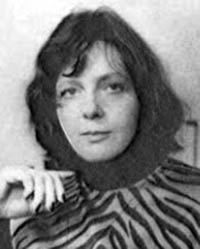

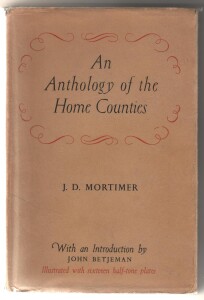 Even today, thirty six years after his death, John Betjeman can still surprise us with his wisdom and original mind. In 1947, less than two years after the end of a war that brought the prospect of a radiation death to the innocent citizens of Great Britain, destroyed some of finest Georgian terraces in London and Bath, that peppered landmark buildings, including St Paul’s Cathedral and the Dulwich Art Gallery with shrapnel, and pock-marked the pastoral landscapes of Surrey, Middlesex and Essex, the editors at Methuen asked the rising poet of the suburbs to provide an Introduction to their new anthology by someone called J. D. Mortimer ( who he?) on the Home Counties.
Even today, thirty six years after his death, John Betjeman can still surprise us with his wisdom and original mind. In 1947, less than two years after the end of a war that brought the prospect of a radiation death to the innocent citizens of Great Britain, destroyed some of finest Georgian terraces in London and Bath, that peppered landmark buildings, including St Paul’s Cathedral and the Dulwich Art Gallery with shrapnel, and pock-marked the pastoral landscapes of Surrey, Middlesex and Essex, the editors at Methuen asked the rising poet of the suburbs to provide an Introduction to their new anthology by someone called J. D. Mortimer ( who he?) on the Home Counties.

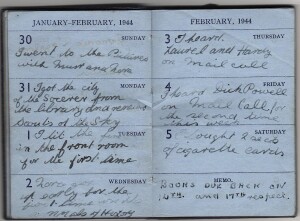

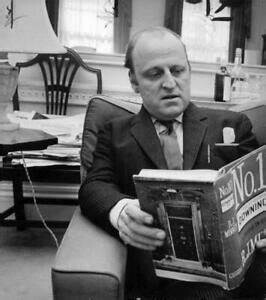
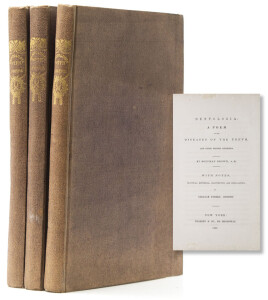

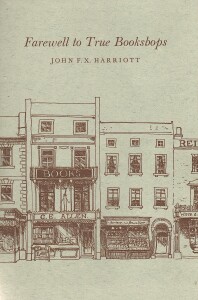
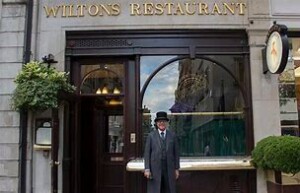
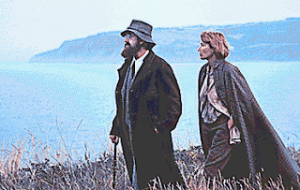 In part one we looked at the way John Thaw tried to disguise a leg injury he had sustained as a teenager. Later on in his audition for RADA he had played Richard III with a limp and as Morse he had tried to disguise his limp. But some actors can easily affect a certain gait for dramatic affect. Both Alec Guinness and Laurence Olivier maintained that once they had got the walk right the rest of the role fell into place. In an adaptation of Ivy Compton Burnett’s ‘A Family and a Fortune’ Guinness had to leave a room to get out into the cold. The way he flung a scarf round his neck and trod stutteringly before leaving told you everything you needed to know about the climatic conditions and preparing to brave them.
In part one we looked at the way John Thaw tried to disguise a leg injury he had sustained as a teenager. Later on in his audition for RADA he had played Richard III with a limp and as Morse he had tried to disguise his limp. But some actors can easily affect a certain gait for dramatic affect. Both Alec Guinness and Laurence Olivier maintained that once they had got the walk right the rest of the role fell into place. In an adaptation of Ivy Compton Burnett’s ‘A Family and a Fortune’ Guinness had to leave a room to get out into the cold. The way he flung a scarf round his neck and trod stutteringly before leaving told you everything you needed to know about the climatic conditions and preparing to brave them.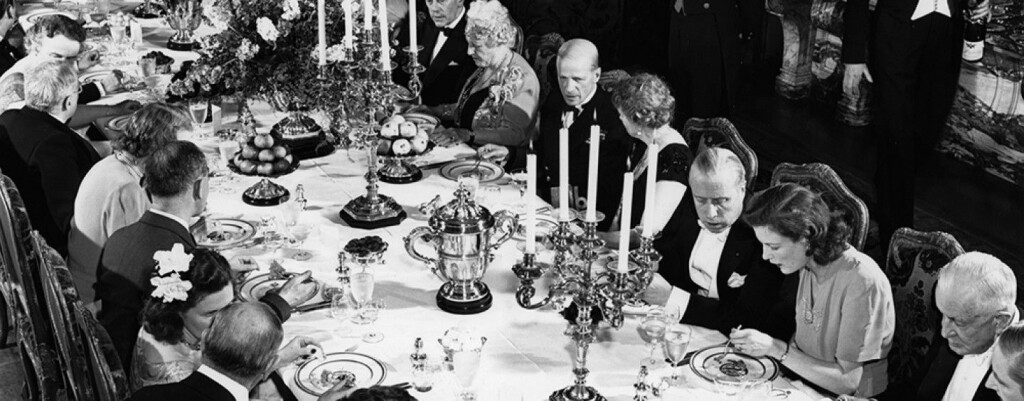
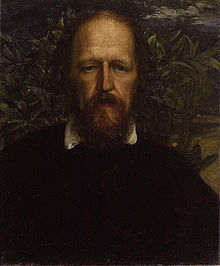 Advances
Advances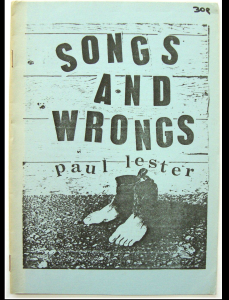 If you search for ‘Paul Lester’ online most the results will concern Paul Lester, the prolific rock critic and biographer; but anyone interested in performance poetry over the past 45 years will hopefully ignore these references and refine their search by adding ‘ poet ‘ or ‘Birmingham’ to ‘ Paul Lester’. They could also add ‘Protean ‘. For ever since Lester published his first poetry pamphlet in 1975 he has been regularly issuing slim volumes ( some very slim) , usually under his own imprint, Protean Publications, from an address in Knowle, near Solihull, although he actually lives in Rubery, in the far south-west edge of Birmingham.
If you search for ‘Paul Lester’ online most the results will concern Paul Lester, the prolific rock critic and biographer; but anyone interested in performance poetry over the past 45 years will hopefully ignore these references and refine their search by adding ‘ poet ‘ or ‘Birmingham’ to ‘ Paul Lester’. They could also add ‘Protean ‘. For ever since Lester published his first poetry pamphlet in 1975 he has been regularly issuing slim volumes ( some very slim) , usually under his own imprint, Protean Publications, from an address in Knowle, near Solihull, although he actually lives in Rubery, in the far south-west edge of Birmingham.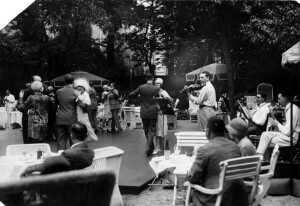
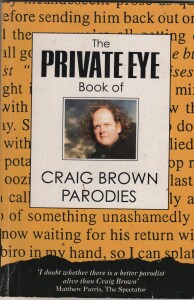 Around 2002 I was interviewing celebs on their book collection for Book and Magazine Collector while also researching the life of acclaimed poet and critic Geoffrey Grigson. One day I read an interview with the famous parodist Craig Brown, whose brilliant contributions to Private Eye had always had me in stitches. Judging from the interview, Brown’s library was dominated by biographies and especially memoirs of living figures in all fields, but with an emphasis on show biz. Interviewing him, I felt, would be a change from talking to rather dour politicians and academics on their first editions. And so it turned out.
Around 2002 I was interviewing celebs on their book collection for Book and Magazine Collector while also researching the life of acclaimed poet and critic Geoffrey Grigson. One day I read an interview with the famous parodist Craig Brown, whose brilliant contributions to Private Eye had always had me in stitches. Judging from the interview, Brown’s library was dominated by biographies and especially memoirs of living figures in all fields, but with an emphasis on show biz. Interviewing him, I felt, would be a change from talking to rather dour politicians and academics on their first editions. And so it turned out.